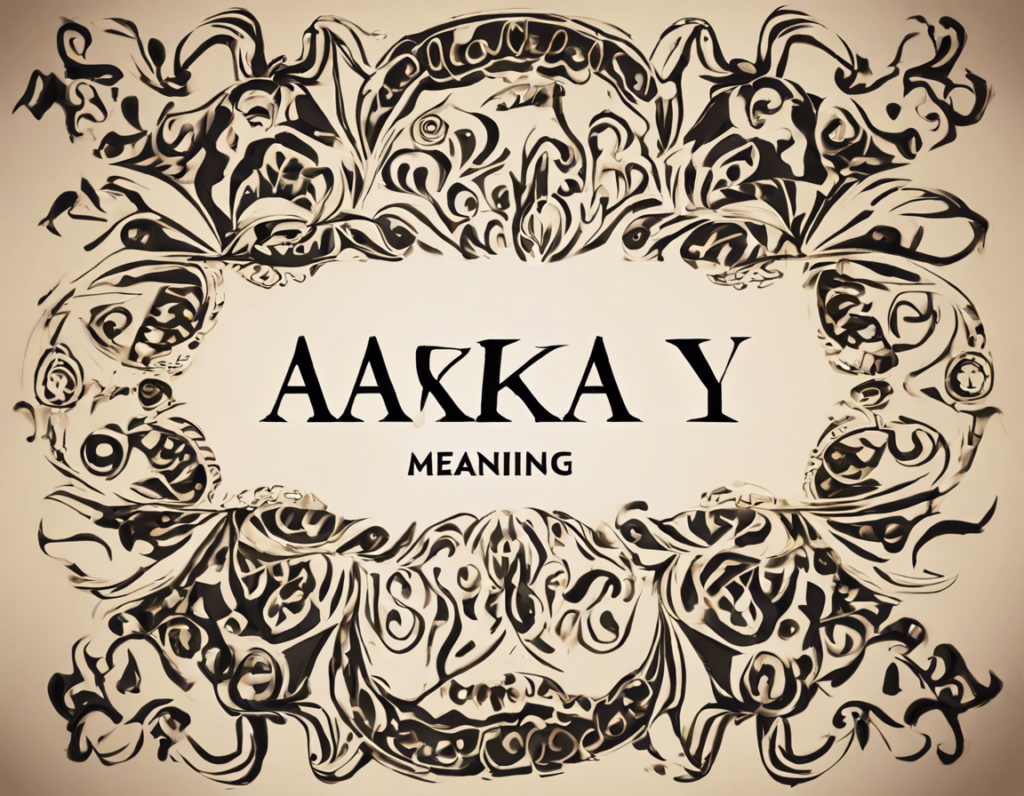Do you find yourself intrigued by the concept of Akaay and wanting to delve deeper into its meaning and significance? You’re in the right place. While the term might be unfamiliar to some, its roots run deep in ancient wisdom and spiritual practices. This comprehensive guide will walk you through the intriguing meaning of Akaay and help you unravel its mysteries.
Understanding Akaay
Akaay, pronounced as “ah-kay”, is a term derived from Sanskrit, one of the oldest known languages in the world, often referred to as the language of the gods. In Sanskrit, “Akaay” translates to “formless” or “without shape“. The term is deeply rooted in Hindu philosophy and spirituality, where it represents the formless aspect of existence.
The Concept of Formlessness
In Hinduism, the universe is believed to consist of both form and formlessness. While tangible entities like humans, animals, and objects represent form, the formless aspect is considered to be the underlying essence behind all forms. This formlessness is often associated with the divine, the transcendental, or the cosmic consciousness.
Akaay in Spiritual Practices
Meditation and Akaay
Meditation plays a crucial role in connecting with the formless aspect of existence represented by Akaay. By quieting the mind and going beyond the physical form, practitioners aim to tap into the formless consciousness that underlies all of creation. This formless essence is believed to be eternal, infinite, and unchanging.
Self-Realization and Akaay
The concept of Akaay is closely tied to the idea of self-realization or understanding one’s true nature beyond the superficial layers of identity. Through self-inquiry and introspection, individuals seek to recognize the formless essence within themselves, transcending the limitations of the ego and the physical body.
The Significance of Akaay
Transcendence and Liberation
Akaay represents the ultimate state of transcendence and liberation in Hindu philosophy. By realizing the formless nature of reality, individuals can free themselves from the cycle of birth and death, achieving moksha or liberation from the material world.
Connection to the Divine
Understanding Akaay is not just a philosophical concept but a deeply spiritual practice aimed at establishing a direct connection with the divine. By recognizing the formless essence within themselves, individuals can experience a sense of oneness with the universe and the divine source.
Frequently Asked Questions (FAQs)
- What is the difference between Akaay and Sakara?
-
Akaay refers to the formless aspect of existence, while Sakara represents the manifest, tangible forms in the universe.
-
How can one experience the formless nature of Akaay?
-
Practices like meditation, self-inquiry, and mindfulness can help individuals tap into the formless essence of Akaay.
-
Is Akaay limited to Hindu philosophy, or do other religions also incorporate this concept?
-
While Akaay is prominently featured in Hinduism, similar concepts of formlessness can be found in other spiritual traditions like Buddhism and Taoism.
-
Does Akaay have any practical applications in daily life?
-
Understanding Akaay can foster a sense of inner peace, connectedness, and purpose, leading to a more fulfilling and conscious way of living.
-
Can anyone access the formless aspect of Akaay, or is it reserved for spiritually advanced individuals?
-
Akaay is believed to be the essence of all beings, and anyone can access it through sincere spiritual practice and inner exploration.
-
Are there any specific rituals or ceremonies associated with honoring Akaay?
-
While there are no prescribed rituals for Akaay specifically, practices like meditation, prayer, and self-reflection can help cultivate a deeper understanding of the formless nature of existence.
-
What are some benefits of incorporating the concept of Akaay into one’s spiritual journey?
-
Embracing Akaay can lead to a deeper sense of peace, connection to the divine, liberation from worldly attachments, and a broader perspective on life and existence.
-
How does Akaay relate to the concept of ego and self-identity?
- Akaay encourages individuals to look beyond their ego and surface identities, recognizing the formless essence that transcends individuality and separateness.
Conclusion
In conclusion, the concept of Akaay offers a profound exploration of the formless essence that underlies all of existence. By understanding and embracing this aspect of reality, individuals can embark on a spiritual journey towards self-realization, transcendence, and connection to the divine. Through practices like meditation, self-inquiry, and mindfulness, one can tap into the eternal, infinite nature of Akaay and experience the liberation that comes with realizing the formless truth of existence.

